Coppa is the topmost muscle in a pork shoulder. I’m curing one from the last butt that I bought for a pulled pork BBQ. Cured and dried it becomes a salumi. Salami? No, salumi. Salami is made from ground meat. Salumi is made from the whole muscle. Think of the difference between a hamburger and a pot roast.
The first step
is to salt cure the coppa. Once I had it removed from the butt, I rolled it in sea salt and put it in a zip-top bag. To the bag, I added a handful of peppercorns and half as many whole fennel seeds. Instacure #2 is added at a rate of 1 level teaspoon for every 5 pounds of meat. A mere 4 ounces will cure 100 pounds of meat. As this piece of pork weighed in at 890g, I added 4g of pink salt. I just sprinkled the pink salt into the bag onto the meat.
Next step:
5 days in the refrigerator. Every day, take the coppa out and overhaul it. Overhauling is nothing more than making sure the salts and spices and well mixed and getting in contact with every little bit of the meat. Give the meat a good massage, moving everything around in the bag, and then shake it back down and replace it in the fridge.
Day 6:
wine bath. Take the coppa out of the bag and give it a good rinse in cold running water. I like to remove the seeds and the spice bits. Put the meat in a bowl or Lexan and cover it with white wine. I like to buy the big jug whites for my soak. Press the meat down under the surface of the liquid and put on the lid. Let it soak for about 4 hours, giving the container a good shake every so often.
Next, trussing.
Trussing is a learned skill. I figured it out after watching the chef while I was at french cooking school very closely every time he did it. It takes patience and practice, but it can be done. Drain the meat and give it a good pat down with some very clean towels or paper towels. At this point, cleanliness is next to godliness! The wine serves two purposes: remove some of the saltiness and to clean away any unwanted microbes that might colonize your salumi. The pink salt should keep most of these baddies in check, but good to keep everything very clean! You have been washing your hands, right? Use new, clean, cotton twine to truss.
Finally, the hard part, Air drying.
Why is it hard? The waiting is the hardest part. The meat needs to be held at 65F and 70% relative humidity for a couple of weeks. I use a custom meat drying refrigerator that I built, but you might have a better idea. I will check in with updates and pictures.
Update: 6/9/14:
It’s been a couple of weeks and the coppa weighed in at 519g. Let’s eat! I cut off the string and sliced right into the middle.
(sorry about the yellow tint on the fat – stupid GIMP software!!)
Nice consistency throughout. No off aromas. Tastes great! –but still too salty. Dammit! OK. Next time, I’m going to just sprinkle with fine salt. The #2 cure should provide enough protection that I don’t need to kill these guys with salt. No more rolling in sea salt. I’m getting way too much salt in the mix and my salumis are still way too salty. I’ll save it for my Dad. He likes the salty stuff. I’ll just vacuum-seal it and keep it in the deep freeze until I go to visit next time!



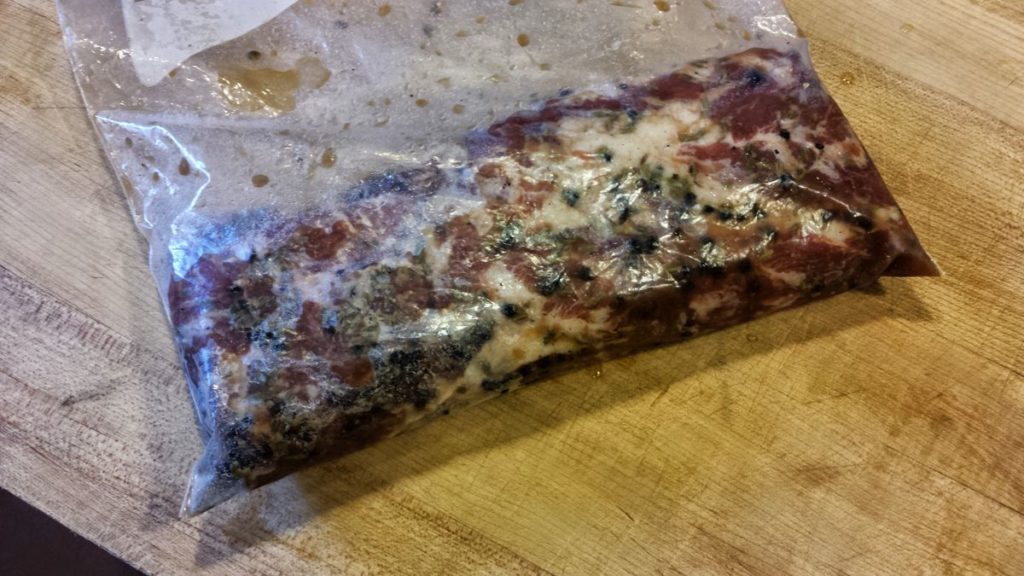
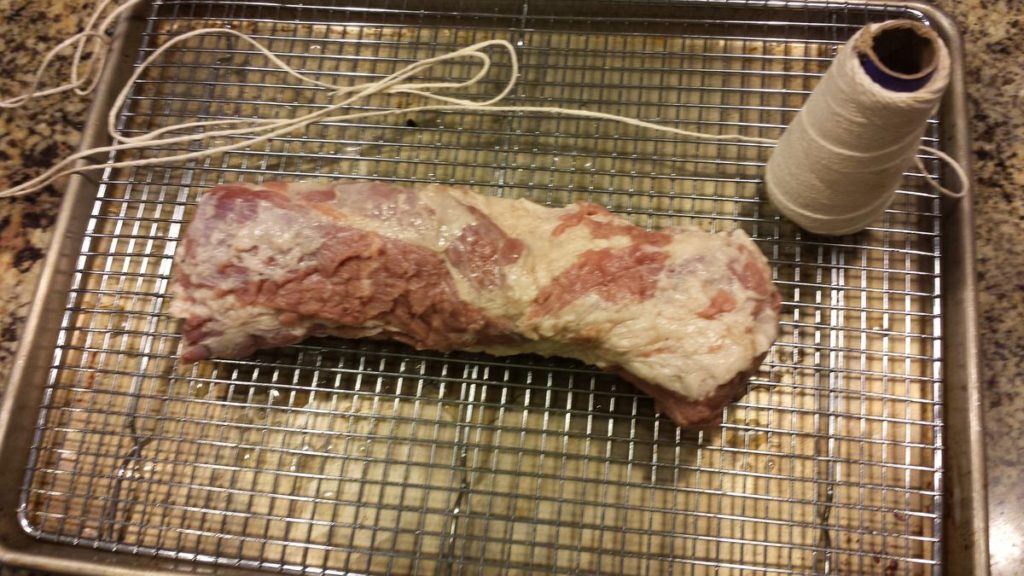
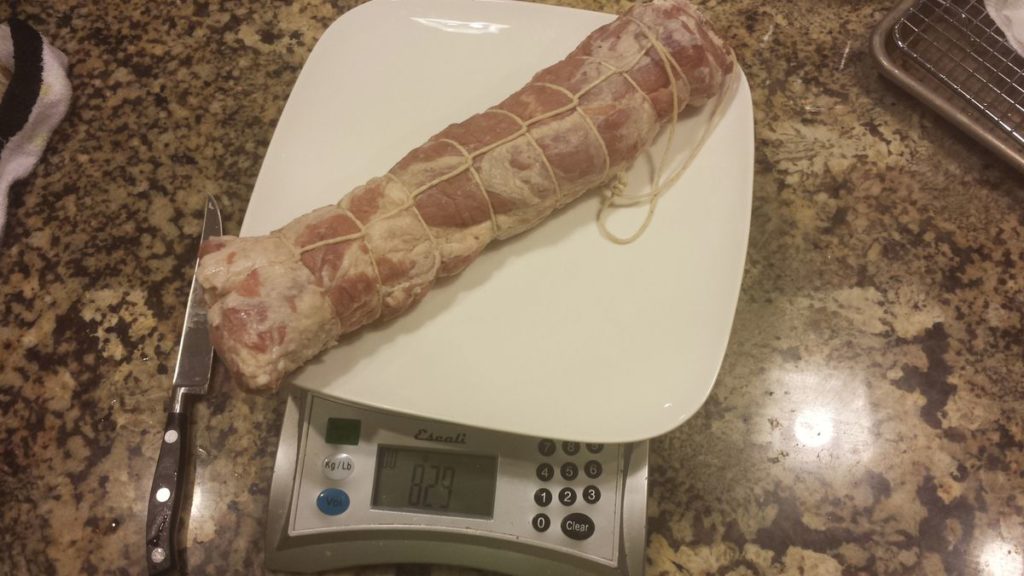
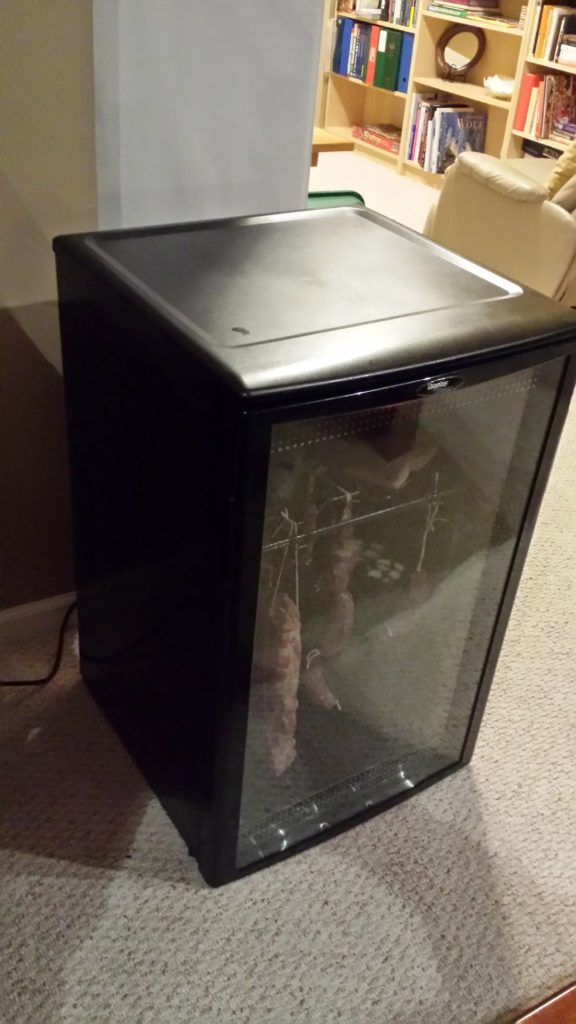
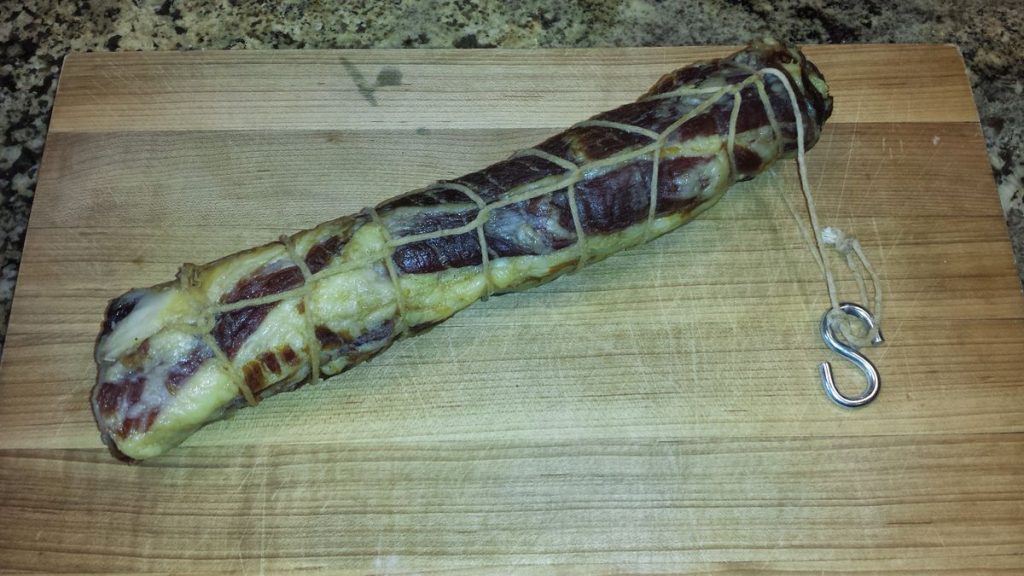
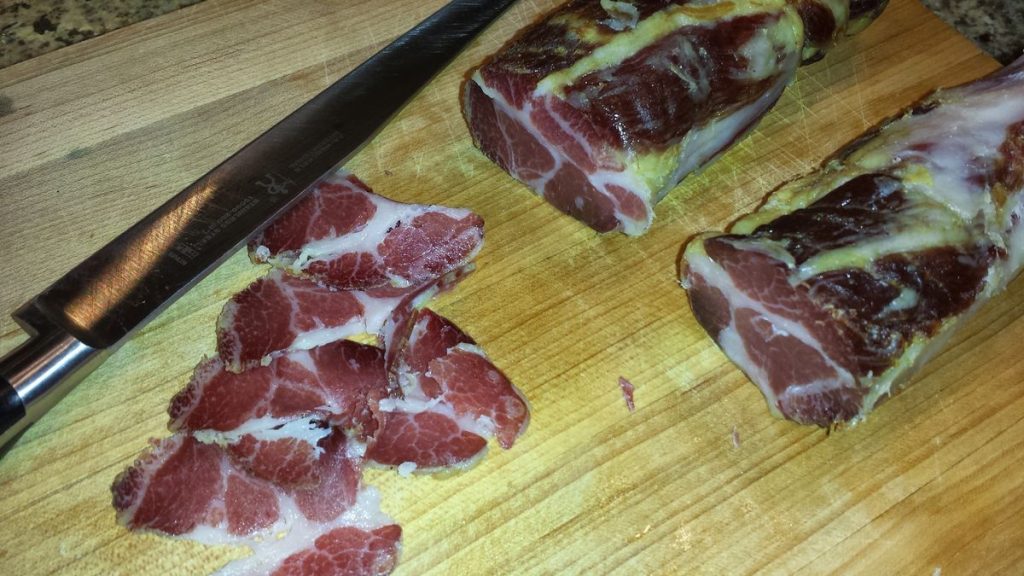
Too salty? Is that because you left it on the salt for 5 days instead of two?
If you weight your coppa, and stick to 3 to 4 percent salt …It will never be more than 3 to 4 percent salt. (how could it? It doesn’t ‘produce’ salt)
I cure my coppa for 12 days in a 3.5 percent salt cure and have never had a problem.
There are people would haphazardly add salt and guess the time in the cure, but using exact weights produces much more consistent results.
Cheers!
John, I love this very simple recipe! To tell you the truth, I was sort of surprised that you left the meat on the brine for 5 days rather than for only 2 days as advised by Jason Price in “The Hungry Dog Blog.” I am in the process of making my very first coppa and I went with Jason’s recipe before I even came here to see yours. I like yours. A lot! I especially love that you don’t encase your salumi in a beef bung cap (added cost and is it really necessary?). I will let you know how mine turns out. I will say that I did take Jason’s advice and crush up my whole peppercorns as well as the anise seeds. I also heated them in a dry frying pan, not only because Jason recommended it, but because I learned this technique from “Hell’s Kitchen”‘s Chef Holli Holgate; it “reawakens” the oils. Try it. You might be surprised. Peppercorns, anise seed and thyme is what I went with. All crushed up and heated to help “open” the aromas of the spices. The addition of these spices to the salt rub makes for more complex flavors. Again — Thank you for posting your recipe!
Good tip on toasting the seeds. I will do that in my next salami! I do it all the time in the kitchen when I’m cooking but I don’t know why I skipped it here. I guess I get too focused on the procedure and forget thing from my other cooking.
I do a lot of cold smoking fish and meat. I taste my ham or smoked pork fillet and if it is too salty, I submerge it in a bowl of very weak brine (25 gms of salt per litre of water) and leave it for a few hours. This should reduce the salt level and not change the flavour at all.
… sort of like reverse brining. The salt does find it’s own level. How does this leave the surface of the meat? I would imagine having to dry it well and then leaving it to air dry for a couple of hours.
You state Instacure should be 0.025% of the weight of the meat. I suspect you mean 0.25% ?
But even then, 0.25% of 890g would be 2.225g of Instacure, and not the 4g you used. Did I miss something?
If you’re going to go with the “salt box” method (rolling it in salt) then the rule of thumb is 24 hours per kilo. More than that can get way too salty. You could also try an equilibrium cure which is 2-3% weight salt used as a cure. An EQ cure can be left on much longer since the salinity will naturally hit a maximum point.